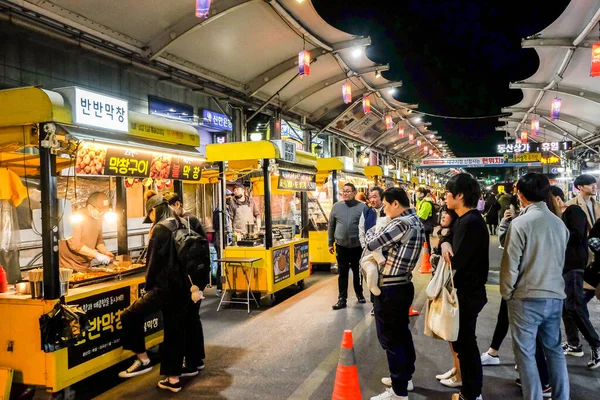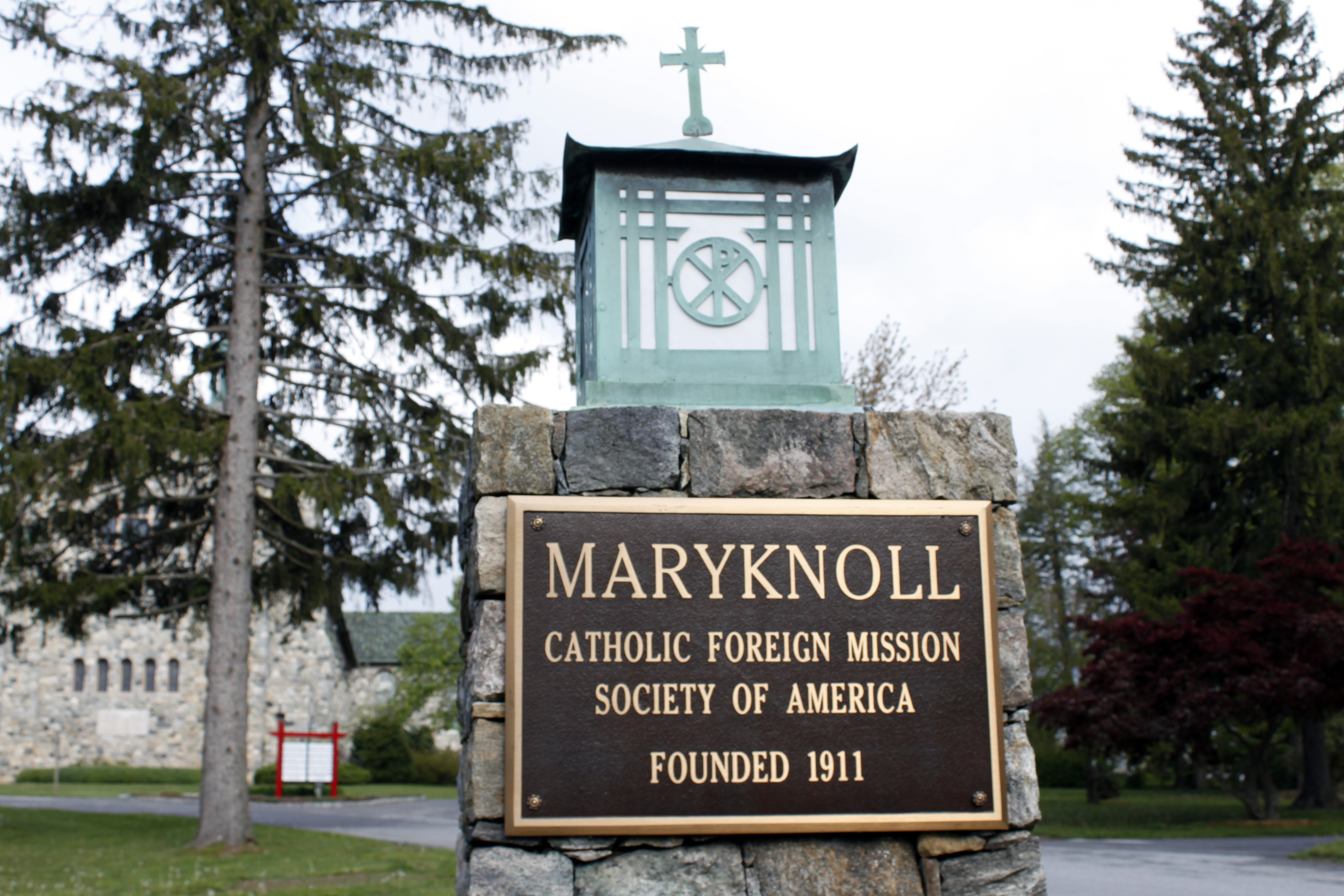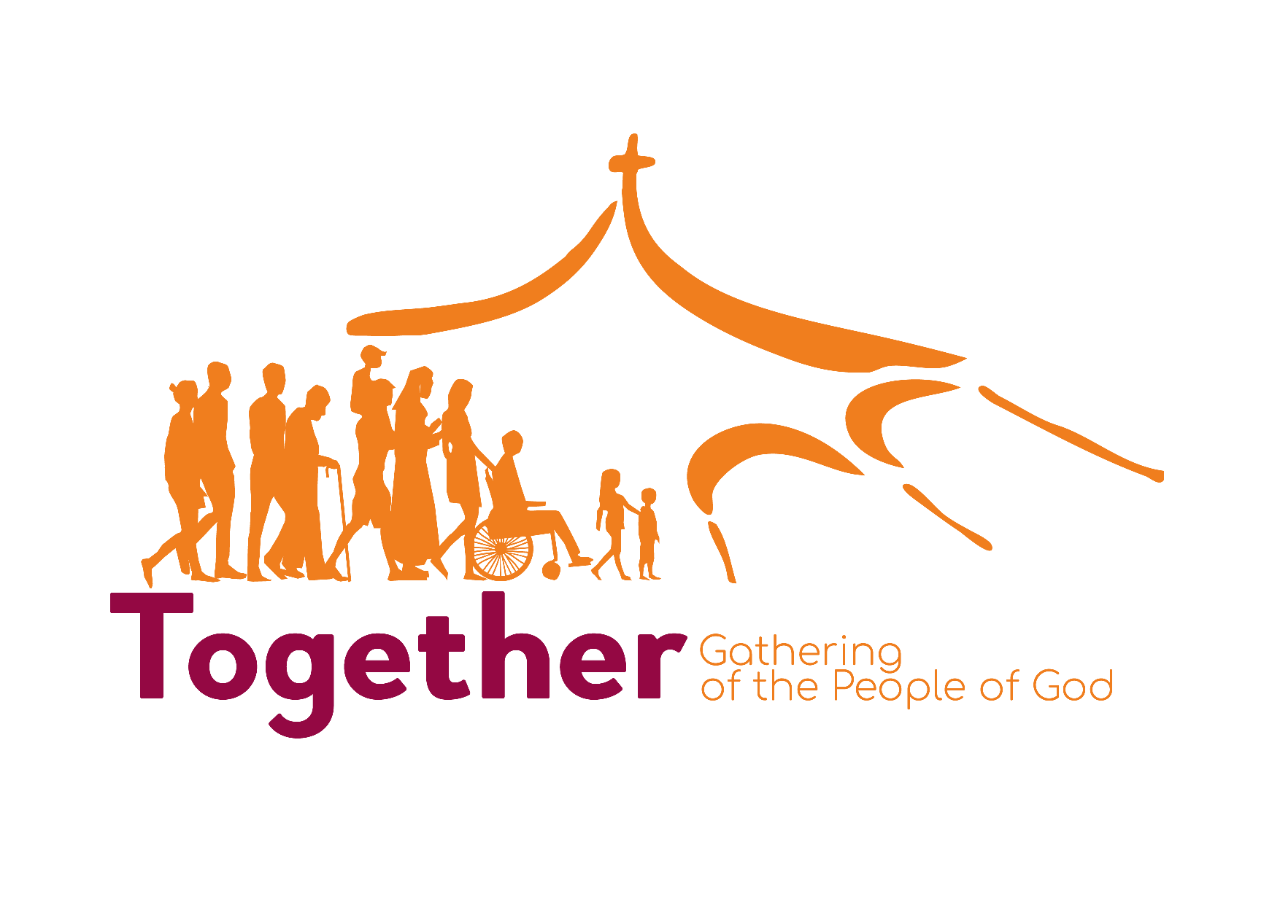Monday, May 22, 2023
The Dark Side of Technology
Saturday, May 20, 2023
The Korean Traditional Market and Gentrification-

The Catholic Peace Weekly's Column by the paper's news director gives the readers some thoughts on Gentrification.
During his elementary school days in the 1970s, the 5-day market in his hometown was truly a festival with plenty to see, eat, and enjoy. The solicitation of the ‘wandering medicine hawkers’ was a cultural public performance held every five days. Musical instruments and dancers appeared, and various magic and demonstrations of power were performed. Monkeys and snakes appeared with strange feats performed. “Take a look at this! It doesn't come every day.” It was a scene where a crude homemade drug was turned into a panacea and sold, but regardless of the efficacy of the drug, onlookers continued to visit. At that time, the marketplace was the center of economic activities where sharing and friendship as well as reciprocity and gratuitousness were experienced in abundance.
His parents, who operated a ‘Pharmacy’ at the entrance to the market, allowed the vendors to set up stalls around the store when the market was open. They ate together and took care of their children in the house. His father repeated often: “When there are many merchants, people gather, and then there are many customers who buy medicine. If you're cold-hearted you'll kill each other. We have to live together.”
In the days when people had nothing and were hungry, the 5-day market was overflowing with food and hospitality. He saw a lot of food never seen before, and many were irresistible temptations. Even if you didn't have enough money, it was a marketplace where a bowl of rice soup was generously given and a few more were added to ask you to come next time.
A restaurant entrepreneur has renovated his hometown, Traditional Market, as part of a local coexistence project with the county office, and became a hot topic. The purpose was to develop the market and stimulate the local economy. When the permanent market was modernized to provide a variety of foods and attractions, beyond expectations hundreds of thousands of people gathered.
However, when visitors were turned away due to prolonged waiting times, parking problems, and lack of sanitary facilities such as toilets, it closed for a month and reopened in early April. In the meantime, various civil complaints have been resolved and food has become more diverse, but the most difficult task to solve was the phenomenon of ‘gentrification.’
‘Gentrification’— finds its etymological roots in the term gentry, or more specifically, landed gentry. It refers to a negative phenomenon in which low-income natives who originally resided are pushed out due to the influx of outsiders and money as the old city center is revitalized. The budget for the traditional market was the same. Some landlords notified existing merchants to vacate, and nearby accommodations and shops raised prices more than double, resulting in many victims.
Fortunately, with the efforts of the entrepreneur during the holiday period, most of these problems have been resolved. Sustainable jobs are provided to job seekers such as young people living in the region, and ‘local food’ is realized where agricultural products produced in the region are supplied as food ingredients.
Currently, our society is experiencing a crisis of serious social imbalance. Due to the low birth rate and the concentration of the population in the metropolitan area, there are concerns about “national and local existence”. Local autonomy was implemented in 1994 to revive local communities that were disappearing due to industrialization, but all local revitalization policies were of little help. One-time, subsidy policies are pointed out as a problem when they do not consider regional characteristics.
We have movements that are working to alleviate these problems that arise and one of them is: The economy of Communion (EoC). This is calling us to live, work, and do business in an integrated way, in concert with all of the other people in our lives. It is a project of the Focolare Movement a Catholic lay spiritual effort that seeks to unite people through economic activity and enterprise.
Revitalizing the traditional market and protecting the small commercial districts has its limits with the individual competence and sincerity of successful businessmen. The subject of commercial rights is the merchant, not politicians, government offices, or franchise companies. The sharing economy of distribution and growth can be realized only when selfishness is discarded and sharing and coexistence are pursued. Conflicts over gentrification in the budget market are educating us on how and what to do to resolve the regional imbalance.
Thursday, May 18, 2023
Maryknoll Society's 100th Year in Korea

The Maryknoll Society in Korea celebrated its 100th anniversary of entry into Korea on May 10, 2023. Both Catholic papers had articles about the celebration and what follows is a translation of an article on the celebration taken from the Catholic Times.
The Maryknoll Foreign Mission Society was founded in the United States for the purpose of missionary work in Asia. The article looked into the activities of the Maryknoll Society, which greatly contributed to the rapid growth of the Korean church.
Successful missionary work in North Korea was based on the renewal of the laity. The Korean missionary work of the Maryknoll Society began in Pyeongyang Province where the church was poor, 5 priests were taking care of 5 parishes, and about 50 mission stations were attached to the parishes at the time.
In 1922, the Maryknoll Society was entrusted with the missionary authority in the Pyeongyang region from the Sacred Congregation for the Propagation of the Faith (now Congregation for the Evangelization of Peoples) and began to build a foundation for the church in the province. Since 1923, the Maryknoll Society has sent priests and nuns as missionaries, including Father Patrick Byrne, who was in charge of preparing the Pyeongyang area. In 1927, after 4 years of working hard to develop the church it grew so the whole area was designated as the Pyeongyang Apostolic Prefecture.
The expansion of the church was driven by the missionary spirit of the Maryknoll Society, which emphasized the participation of the laity even with the rise of Japanese imperialism and communism.
The Maryknoll Society's missionary efforts were frustrated by the escalation of World War II. In 1942, all American missionaries from Korea under Japanese colonial rule were forcibly repatriated to the United States because the United States was considered an enemy. Through the efforts of the Maryknoll Society, the growth of the Pyeongyang area which had 51 missionaries, 21 parishes, and 26,424 believers, was put on hold.
After Japan was defeated in the war, three priests from the Maryknoll Society entered Korea in 1946 and stayed at Myeongdong Cathedral in Seoul to prepare for a return to the North. Although the door to North Korean missions was closed, the Maryknoll Society embarked on a new missionary journey in South Korea beginning the Diocese of Cheongju and Incheon and laying a solid foundation for growth in the Korean Church.
In 1953, the late Bishop Noh Ki-nam (Paul), then Archbishop of Seoul, entrusted the Maryknoll Society with pastoral care in the North Chungcheong area. In 1958, the apostolic prefecture in Chungcheongbuk-do became the Apostolic Vicariate of Cheongju, and Father James Pardy of the Maryknoll Society was ordained as a bishop, laying the foundation for the diocese as the first vicar.
The Maryknoll Society built churches among the poor and peasants in the war-torn North Chungcheong Province in the underdeveloped mountain villages. Parishes, outposts of the gospel, were prepared in places with potential for development in various parts of Chungcheongbuk-do. Clinics were opened in the Jeungpyeong, Okcheon, and Boeun areas to provide medical support to farmers, and with the support of the Catholic Relief Association under the Catholic Bishops' Conference of the United States, started to relieve the poor in Chungcheongbuk-do.
The Maryknoll Society set up credit cooperatives in parishes to provide a stepping stone for the poor to start small businesses by obtaining loans. It also provided opportunities for economic self-sufficiency by carrying out a campaign to increase rural income by raising Korean cattle and raising pigs for farmers.
As the churches in North Chungcheong Province were revitalized through the efforts of the Maryknoll Society in 1958 Bishop Roh entrusted the pastoral care of the Incheon area to the Maryknoll Society. In 1961, the Vatican elevated the apostolic prefecture of Incheon to an Apostolic Vicariate and ordained Fr. William John McNaughton as a bishop and appointed him as the first vicar.
Farmland reclaimed from tidal flats was distributed to about 300 refugee households who settled on Ganghwa Island, and the hungry were fed with relief food provided by the Catholic Relief Association. They also provided medical benefits to residents by setting up the “Christ the King Clinic” in the Ganghwa Island area. They organized the Catholic Labor Youth Association (JOC) to protect the rights and interests of impoverished workers.
Thanks to these efforts of the Maryknoll Society, the diocese of Cheongju has grown into one of the rural dioceses in Korea with the highest ratio of believers, with a ratio of believers to residents of 11.6% as of 2022 and about 200 priests in 82 parishes. The Diocese of Incheon has grown to become the third-largest diocese in Korea with over 520,000 believers.
The Maryknoll Society considered the self-reliance of the Korean church to be the essence of missions, so it continuously trained religious leaders. The Maryknoll Society established the Congregation of Our Lady of Perpetual Help, the first indigenous congregation in Korea, in Pyongyang, and focused on accepting Korean vocations. As a partner of the Korean church, it nurtured the vocation to the priesthood and religious life. The Religious Congregation of Our Lady of Perpetual Help is today one of the largest religious groups in the country.
After the Second Vatican Council, the Maryknoll Society pursued a special pastoral ministry into poor social situations according to the reform of the universal church. In the 1980s, the Maryknoll Society, together with the Maryknoll Sisters, started a basic community activity in Seongnam, Gyeonggi-do where workers and the poor were together. In 1987, Seoul Express Bus Terminal Parish, and Garak Market were areas in which they began pastoral work. It was a move that showed that the Korean church should move forward in special pastoral areas where ordinary pastors would have difficulty entering.
During the 100 years of its entry into Korea, the Maryknoll Society laid the foundation for church growth in the Pyeonyang Province, based on the renewal of the laity, served the poor, helped the Korean church become self-reliant with a socially engaged attitude, and greatly increased the numbers of Christians. Based on the results of pastoral and missionary work in Korea, the Maryknoll Society is preparing to move beyond Korea to missionary work in Asia.
Father Gerard E. Hammond, who has been in Korea as a missionary for more than 60 years, spent the past years reaping the fruit of evangelization in the south and said: “I hope that the Maryknoll Society's mission to the North, which was frustrated by the division of the country, will be resumed through national reconciliation. All the missionaries who have been with Korea throughout their lives did not forget their dream of returning to Pyongyang, their first missionary field.”
The Maryknoll Society will be hoping that in the next 100 years they will be planting the seeds of the gospel throughout China and Asia and returning to North Korea.
Tuesday, May 16, 2023
Meaning of Family Community

The director of Our Theological Institute in the recent Catholic Times' Eyes of the Believer column gives readers some thoughts on the family community.
These days, when she gets home from work her mother-in-law urges her to turn on the smartphone as soon as possible. She wants to see the baby born to her niece. Eating, playing, sleeping, etc. Even though every day is a repetition of a routine, seeing how a child grows is amazing every time. In an era when getting married and having children is considered a huge burden, seeing your niece and nephew raising a beautiful baby as a parent and starting a family, you can feel the love and joy of life bestowed by God.
On the other hand, while looking around the home of my nephew full of energy, she feels sad seeing the social media posts of a friend who cares for her mother in a nursing home. The friend prays for her mother's death every day as her health deteriorates.
Unlike in the past, when longevity was considered to be a blessing, it is also an era in which a longer lifespan is regarded as a punishment with prolonged physical and mental suffering with no hope of getting better. In particular, it seems that the elderly are more afraid that the painful time that requires someone's care will burden their loved ones. They are also afraid of being left alone in family life. When she sees her friend who carefully watches over and prays for her sick mother, she can feel God's love with her even in times of pain.
She remembers a parishioner who took care of her mother-in-law with Alzheimer's disease for nearly 10 years at home, who couldn't even recognize the people around her. She realizes that it's not about the given relationship or role as a daughter or daughter-in-law, but rather the attitude towards human existence. Even with a caregiver, it wouldn't have been easy to care for a patient at home. However, that sister overcame those difficult times by going to the church and receiving comfort and solace through communion and prayer. This was whenever she felt overwhelmed until her mother-in-law died.
Human life and illness are ultimately things one must face alone, but having someone to accompany you through it can give you the strength to endure that pain. A family shares life's joys, but it is also the closest and most intimate community where one can share the pain with others. However, as I observe various families, I am reminded that these family communities are gradually disappearing. Family relationships also weaken and crumble during times of hardship. We live in a society where it is increasingly difficult to endure even with family.
In Korean society, where the total birth rate in 2022 is 0.78 and single-person households outnumber families consisting of parents and children, it can be easily guessed that the shape and meaning of the family community will change rapidly in the future. It is probably because of these social changes that the ‘Life Partner Act’ was recently proposed. This recognizes various forms of living communities that have nothing to do with marriage or blood ties. It requires society to legally protect them.
In the church, there are concerns that this law will infringe on the uniqueness of the family community, but considering Jesus' words, who wanted intimacy and relationship to expand beyond blood families to the faith family, it is a great way for our society to care for each other. She also hopes it will be a family community.
The elderly are not useless beings who need to be disposed of, but respected with a grateful heart for being who they are and what they have done to build our society. Babies born are not tools to secure our society's future, but precious children who convey the joy of life just by being. Perhaps a society that becomes a family community in which we love and consider our neighbors and immigrants as our brothers and sisters is the meaning of family that Jesus spoke about.
Sunday, May 14, 2023
Pastoral Care Giving
In the Eyes of the Believer column of the Catholic Times, a pastor gives us some help in understanding what is happening in the Care World of society.
In the past, care work such as childcare and elderly care was considered a personal and private responsibility of women, leading to the stereotype of "burdensome childcare" and "burdensome caregiving" that women had to endure. However, with changes in society, childcare has gradually shifted to grandparents, daycare centers, and academies, while elderly care has moved to nursing homes.
Despite care work becoming part of the social system, its role has continued to be regarded as women's work, and femininity has been undervalued and exploited due to the outdated notion that it is "unproductive." Care work has remained tied to low wages and low social status.
Nowadays, care work needs to be given priority and placed at the center of all areas, including the home, family, community, country, and the world. The reason for this is that globalization led by transnational corporations, known as the "shadow state," has generalized the absence of care, a situation in which structural indifference dominates, and the poor and socially vulnerable are ignored.
Pope Francis, who foresaw this situation early on, mentioned "the globalization of indifference" in the Apostolic Exhortation Evangelii Gaudium and pointed out the "throwaway culture" that uses people as long as they are useful and discards them when they are no longer needed— the poor, the unborn, the elderly, and the youth who are forced into unemployment and irregular jobs. The pope also emphasized the need to promote a "culture of care" in all areas, to confront the pervasive culture of indifference.
As the need for the systematization and institutionalization of care work is emerging, there is an urgent need for a "care ministry" within the church to promote a culture of care. According to the "2022 Poverty Statistics Yearbook" published by the Korea Institute for Health and Social Affairs this year, the poverty rate for single-person households in 2020 reached 47.2%. If we look closer, the poverty rate for single-person households of people aged 65 and over was as high as 72.1%. The care crisis has become a serious social issue, and it is time to address it by recognizing care work as an essential and valuable part of our lives, society, and economy.
The increase in poverty leads to 'dying alone' and "increased suicide rates." During the COVID-19 pandemic, the Catholic Church was recognized in Seoul with its "Myeongdong Soup Kitchen" for homeless people and serving in shelters. However, the church cannot be satisfied with that alone. Various forms of care ministry must be implemented in various fields, such as childcare and youth care, care for single-person households of young and old-aged people, and psychological counseling and spiritual care. This is because the church's practice of love ultimately manifests itself in care.
The parable of the Good Samaritan in the Gospel of Luke presents a model for true care. The Samaritan approached a dying man and healed his wounds, but he did not stop there. He took him to an innkeeper and asked for him to be cared for until he recovered.
In this age of caregiving, the traditional role of approaching the suffering and healing their wounds is still important, but it is also necessary to build a caregiving infrastructure that allows for collective care through solidarity with one another. If we shift our thinking, we can see that local churches can serve as a caregiving infrastructure for collective care. We hope that the church community can become a platform for the caregiving mission, rather than simply remaining in the traditional role of caregiving.
Friday, May 12, 2023
Synodalitas and The Korean Church

The Catholic Times in its recent issue has an article by a priest director of the Korea Institute of Christian Thought. The Catholic Times, in collaboration with the Institute, explores the theological meaning of Synodality in the context of the Korean Church, and how its values can be meaningfully embodied in the actual church setting and to unearth church practices and models that can provide inspiration and insights towards Synodal renewal for the Church.
The COVID-19 pandemic briefly halted or slowed down our society. From this, we have had the opportunity to reflect on our problems. In the Church, we also had the opportunity to reduce activities and look back at ourselves to explore our mission anew. The increasing interest in Synodality in the Church can also be understood in this context.
Synodality is a movement of ecclesial renewal. It calls for reflecting on the reality of the faithful and the community, and the ways of adapting to the changing environment of the world with a new mission and methods.
As the paradigm of thinking about the world changes with each era, the Church also needs to communicate on this basis and proclaim the Gospel. This does not mean changing doctrine and tradition. It means that the form of living and expressing it is changing. To create a "Synodal Church" in the future, the author intends to share some of his feelings of regret.
From October 2021 to October 2024, the 16th World Synod of Bishops, with the theme "Walking Together," proceeds from the local diocese to the nation, continent, and universal Church. The Church in Korea has already gone through the Synod process at the diocesan level in 2022 and shared its contents with the global Church. The application of the principle of Synodality was an important point in diagnosing the realities and difficulties of each local Church and finding the Church's mission. Since all members of the Church are equal in the eyes of the Lord, it is crucial to listen, respect each other, actively participate in the Church's work with a sense of faith, and work together in the Lord's mission.
However, there are negative views in the Korean Church that the momentum of the Synodality movement will soon wither away. Unlike the Roman and Western churches, which are currently experiencing a church crisis, many people in the Korean Church do not sense the great danger of the situation. When talking with the parishioners and priests one can feel that there is a significant lack of understanding and necessity regarding the Synod and Synodality.
Unlike the Korean Church, the German Church has been losing about 200,000 believers annually in recent years. To overcome this crisis, the German Catholic Church has been holding a regional church synod since 2019, separate from the 16th World Bishop Synod. At this synod, which consists of 230 members representing various levels of believers and priests, controversial issues within the Catholic Church, such as same-sex unions, priest celibacy, and women priests, were discussed and resolutions were passed through one vote per person. Of course, implementing this is the responsibility of the bishops of the respective dioceses, but the German Bishops' Conference also expressed its respect for the German Synod's resolutions.
Of course, creating a Synodal Church is not a measure for crisis management but rather a necessity for performing the Church's mission within the expressions and methods of the times. However, the danger is we may become a church that is more concerned about preventing a crisis than sincerely fulfilling its essential mission.
We need to pay attention to the clericalism or priestly authoritarianism of the clergy that is a problem in the Korean Church. Such criticism is also related to the impact of social culture based on the increase in values of democracy and individual freedom. The consciousness of equality and individual freedom and decision-making is becoming more important in our society. Priests are required to serve with a more humble attitude for the sake of the flock.
Of course, since it is the spirit of the gospel, priests should seriously consider the incorrect authoritarian priestly attitudes and the decentralized role-sharing of the Church's mission. Conversely, we also need to think about Korean believers' passivity. Believers themselves must take responsibility for their faith, and the Church should foster an environment where they can participate actively.
Wednesday, May 10, 2023
Our Brothers Of The Coptic Orthodox Church

A professor at a Catholic University writes in a featured column of the Catholic Peace Weekly about one of the issues that continue to embarrass the unity of Christianity.
The Coptic Orthodox Church is said to have been founded by Saint Mark the Evangelist in Alexandria, Egypt. In Greek, Egypt is Aigyptos, and in Arabic, it is Qubt. Qubt entered Latin as Coptus and was called Copt in English. We use this word in English to refer to the Coptic Orthodox Church, but the correct term is the Egyptian Orthodox Church.
Christianity split into different paths once it gained freedom of religion after the persecution in Rome ended. In the 4th to 5th centuries, Christians debated whether Christ was divine or human. They eventually reached a consensus that Christ was fully divine and fully human. However, they later divided again over the question of how the one Christ could exist in two natures, divine and human. The Council of Chalcedon in 451 was where they argued and separated.
According to the Coptic Orthodox Church's monophysitism: A Christological teaching that the person of Christ consisted of single divine nature or divine-human nature in which the human was absorbed by the divine.
The Catholic Church (Western Latin Catholic) and the Eastern Orthodox Church, uphold Dyophysitism: The Christological position that two natures, divine and human, coexist in the unique person of Jesus Christ God.
They fought with each other over secondary doctrines instead of focusing on Jesus Christ's teachings and spent time on doctrinal disputes instead of loving one another.
It took them 1,522 years to realize their shame. On May 10, 1973, Pope Shenouda III of the Coptic Orthodox Church visited the Vatican and met with Pope Paul VI. They signed an agreement stating that despite unnecessary increases in their theological differences over centuries due to non-theological factors, they could acknowledge Christ together, saying, "Christ is perfect God and perfect man."
On May 10, 2013, Pope Francis met with the Coptic Orthodox Church's Pope Tawadros II in Rome and reaffirmed that they are united in Christ as one Church. From May 9 to 14, Pope Tawadros II of the Coptic Orthodox Church will visit the Vatican. He is expected to speak at a general audience with Pope Francis on May 10, the 50th anniversary of the signing of the joint declaration of the Catholic and Coptic Orthodox Churches and the 10th anniversary of Friendship Day, and hold a liturgy at the Basilica of St. John Lateran.

